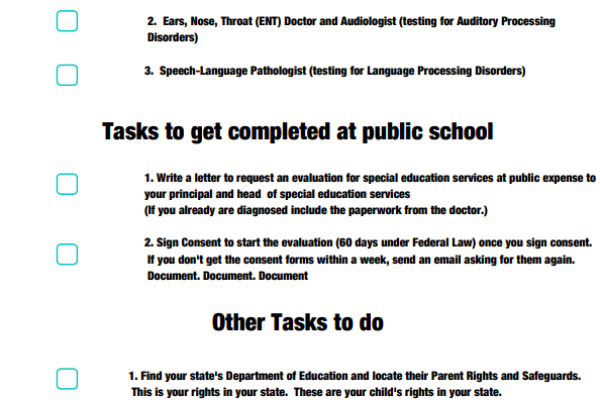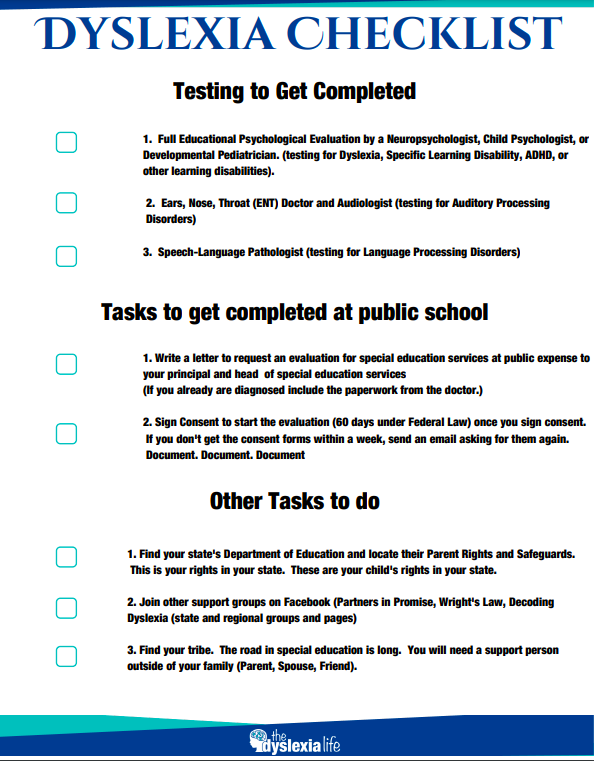
Is 8 the Magic Number for Dyslexia?
| Identification, Specific Learning Disability (SLD)
An eight year old with a new dyslexia diagnosis may spend 2.5 hours a week at one-on-one, year round remediation. The same work only takes 30 minutes for a kindergartener and can be done in the general education classroom.
In classrooms all across America, general education teachers stop teaching children how to read at age eight (2nd grade) and begin “reading to teach” different subject matters. After 2nd grade, the reading requirements are longer and are required to accomplish work across all subjects. This is why kids who are dyslexic, or have other reading/learning disorders, suddenly show signs of struggling.
They made it to second or third grade without reading proficiently by “faking it,” memorizing words, mouthing words and getting help from other kids. One in five kids are dyslexic so in a room of 30 kids, six of them are statistically likely to be dyslexic.
The “large majority of students who are diagnosed with dyslexia aren’t identified until at least third grade,” according to Dr. Sally Shaywitz, co-director of the Yale Center for Dyslexia & Creativity and author of Overcoming Dyslexia.
What Is the Solution?

Early intervention and identification of dyslexia or a Specific Learning Disability (SLD) is the cheapest, most efficient, and effective way to remediate dyslexia with proper reading instruction using multi-sensory reading tactics in the general education classroom without lots of one to one hours in a special education setting. For a military family, (early diagnosis and multi-sensory reading intervention) are KEY in a more successful path to helping your child achieve their fullest potential.
Most of the major dyslexia advocacy groups push for mandated screening for dyslexia for kindergarten through 2nd grade in all fifty states. By doing so, they hope to catch kids early who are dyslexic and start to help them in general education without the need for an Individualized Education Plan (IEP). This is largely the model the state of Texas follows.
Like many parents who have dyslexic children will tell you, early on we saw lots of doctors and providers but most of them lacked any training on SLD or dyslexia. We hired multiple certified special education teachers as tutors both in Hawaii and California. Unfortunately, neither of these people had any training in multi-sensory reading and spelling instruction or dyslexia.
This is a major issue all over America, the lack of proper training and education on dyslexia, learning disabilities or invisible learning disabilities (dyslexia, ADHD, Autism are examples) to teachers and educators in most states. While some states like Georgia, Texas and Colorado have passed state laws to mandate this training, the sad reality is there is still a huge gap in teacher training on dyslexia and SLDs.
There’s a huge myth surrounding dyslexia, that it cannot be identified until age eight, or that schools can’t diagnose, identify, or test for dyslexia. While a school can’t give a medical diagnosis, they can give an identification of a disability (for someone who’s diagnosed with dyslexia or any other reading disability their eligibility for special education services would be most likely under the eligibility category of Specific Learning Disability (SLD).
When kids are about seven or eight the frustration comes out because their tricks and coping with being unable to read no longer work as they did in the younger grades. It’s not uncommon to see a lot of signs of anger, withdrawal and crying. You start to see kids develop anxiety tied to learning disabilities. You may start hearing from your child’s teacher, bringing up issues with your child. Sadly, sometimes this is when you start to see kids with no prior behavior problems sent to detention.
What If Your Child’s Diagnosis Is Delayed?
Being diagnosed with dyslexia at age seven or eight is extremely late because we can no longer remediate dyslexia in the general education classroom because it will require one to one intervention with special education services and training.
If you didn’t receive a diagnosis by age eight, your child may have sat in the classroom for three years and probably didn’t learn to read at all. They memorized a lot of words, guessed words with pictures and developed other tricks. It will require massive amounts of remediation to close the gap to reading proficiently by the time you exit high school.
According to the National Institute for Literacy’s National Center for Adult Literacy, the average American reads at 8th grade level. Only one out of three fourth-graders reach a proficient reading level. Fifty percent of adults cannot read a book written at an eighth-grade level
You will need not only multi-sensory reading instruction at school one-on-one, but you may also need to hire a private tutor or supplement the school services yourself at home to support your child. It will require year round intervention with very few breaks including working holidays and summer vacation for up to two years, but could be as long as five years!
It’s Never too Late – How You Can Help Your Child?
For someone who’s willing to do the work at home (homeschooling), or who can’t afford tutoring privately, you can buy a program called Barton designed by Susan Barton based on Orton-Gillingham. This program is scripted and can be done at home with your child as a supplement or in a homeschooling environment. Amongst active-duty families there’s a large community of people homeschooling with dyslexic children due to lack of resources or support at the public school.
Active-duty families often don’t have a year to fight the local school to get help every two to four years when you move. Barton was designed for an untrained person to use, that’s why it’s scripted. Some of the other programs you hear about (Wilson, Take Flight or Orton Gillingham) require the person doing the program to have a college degree, master’s degree, or doctorate and lots of hours of training (some as high as 700 hours).
Speaking from personal experience, conversations with other parents, advocates and attorneys, the training by the person doing the intervention with your child in public school is never going to be on the same level as a private tutor with certification in both the systems and from an organization like the Orton Academy, International Multi Structured Language Education Council (IMSLEC), or other professional organizations for reading professionals in SLD or dyslexia.
This is why you often hear comments like “even when you win at the IEP table you don’t win.” Your IEP may list services, but that doesn’t necessarily mean your child gets them or that anyone is actually trained enough to help. Even when you go to due process and win the only way to force compliance is more legal action.
How to Advocate for Your Child
Advocating for your child requires that you need to know your state’s laws on dyslexia specifically. The children who get the most services or support at an IEP meeting are usually ones with advocates and/or whose parents spent the time getting to know the law. Yes, it’s sad a parent has to research the law in order to get public service from school, but that’s where we are today.
While all states have to follow federal law at bare minimum, almost all the 50 states except a handful also have state laws on dyslexia (they included varying degrees of screening, teacher training on dyslexia, mandated dyslexia training in curriculum in education degree programs in their colleges and universities and creation of professional endorsement licenses).
How to Research Your State Laws
Each state’s dyslexia laws vary largely. To find this information, google “(((your state))) dyslexia law and/or your state’s Department of Education, State Board of Education, or Educational Agency. From there look for sections covering special education.
There’s no one better to fight for your child than the parent.
We also recommend you find your state specific parental rights and safeguards. This can be found by googling “(((your state))) parent rights for special education” or “(((your state))) Department of Education.” You need to know the laws, in order to use them to demand the services you are entitled to when you get told things like “we don’t do that here.”
Dyslexia Letter Resource
The US Department of Education Dyslexia Guidance Letter found HERE was published in 2015 to help educators and parents understand what is expected by the Department of Education. We strongly suggest you save this letter. It takes years and many complaints in order to get the USDOE to issue such a letter.
Quote the Dear Colleague letter to educators!
“Under the IDEA and its implementing regulations “specific learning disability” is defined, in part, as “a disorder in one or more of the basic psychological processes involved in understanding or in using language, spoken or written, that may manifest itself in the imperfect ability to listen, think, speak, read, write, spell, or to do mathematical calculations, including conditions such as perceptual disabilities, brain injury, minimal brain dysfunction, dyslexia, and developmental aphasia.”
Save this letter, as you may need this letter to reference over and over to your child’s teachers each time you PCS.
How Do You Find Other Resources?
Decoding Dyslexia is a grassroots group started by the International Dyslexia Association. There’s a chapter in most states. Most of the Decoding Dyslexia groups have either a Facebook page or group or both. For active duty families there is a group called Decoding Dyslexia Military on Facebook. They also have a public page. The online active duty dyslexia spouse support community is a huge web all over the globe. It’s not uncommon to find many parents going to your new location or duty station who will tell you exactly who to call, schools to attend and names of local advocates.
The path forward is one that will be ever-changing. Most professionals in the field recommend redoing testing every two to three years in every area your child has concerns (neuropsychologist, child psychologist and other specialists) to measure progress and make sure you don’t miss other problems that perhaps didn’t present themself earlier.
Your Next Steps:
- Google your state dyslexia law
- Google your state’s Department of Education look up:
- Parental rights and safeguards
- Search outside tutors from groups like:
- Orton Academy– Academy of Orton-Gillingham Practitioners and Educators
- ISMLEC – The International Multisensory Language Education Council
- ALTA-The Academic Language Therapy Association
- Get plugged in

About the Author
Hilary Laxson was a Coast Guard spouse for 12 years and has been in the military community since 2000. She graduated from the University of Denver in 1999 with a BSBA in Finance and obtained a graduate level paralegal degree in 2000 from University of San Diego.
She spent time in California, Georgia and Hawaii as a Coast Guard Family member. She has a child with severe dyslexia and other learning disabilities in high school. She’s the parent volunteer for Decoding Dyslexia Military for Georgia and actively involved in advocacy for active duty families in the State of Georgia. Last February, she attended “Say Dyslexia” Day in order to help bring more attention to dyslexia in the State of Georgia. Georgia passed SB48 “the Dyslexia Law” in 2019. She runs a parent support group on Facebook called Warrior Parents of Dyslexics for parents all over the USA who need help navigating the world of dyslexia. When she’s not helping parents with dyslexic children she works full time as an online business consultant and business manager.



I never knew that general education teachers stop instructing kids on how to read. My best friend told me that his family was looking for a reading and writing tutor for his cousin with dyslexia because of the problem with forming words correctly, and he asked if I had any idea what would be the best choice for them. Thanks for this helpful article, and I’ll be sure to consult a trusted private dyslexia literacy tutoring service as they can provide more information about their services.
Great Article! Thank you for sharing this is a very informative post, and looking forward to the latest one.
It’s interesting to learn about the “8-year rule” and how identifying and addressing dyslexia before the age of 8 can significantly improve outcomes for individuals with dyslexia. The emphasis on early screening, intervention, and evidence-based instructional methods highlights the importance of supporting individuals with dyslexia from an early age. Your blog post serves as a valuable resource for parents, educators, and anyone interested in understanding dyslexia better and advocating for effective interventions. Keep spreading awareness and promoting early identification and support for individuals with dyslexia!